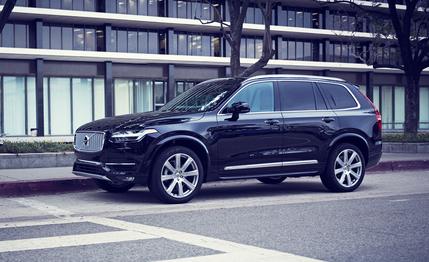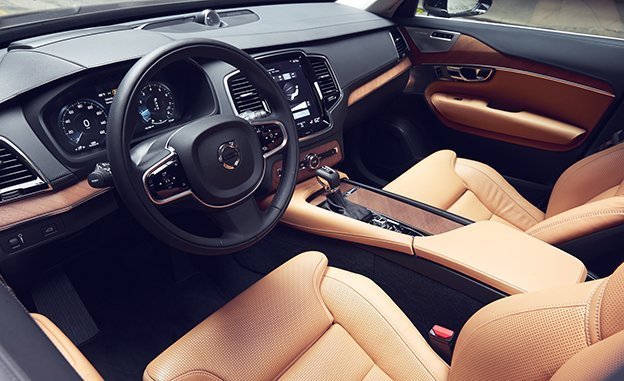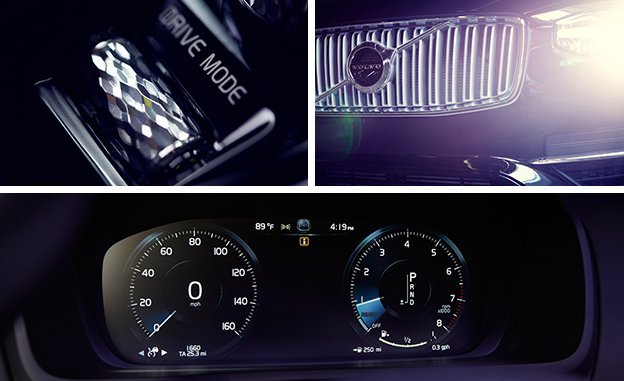
 Instrumented Test
From the September 2015 issue
Instrumented Test
From the September 2015 issue
Once upon a time, it seemed as if Sweden and Volvo were destined to rule the world. In 1975, Björn Borg was emerging as the world’s dominant tennis player, ABBA had already won the Eurovision Song Contest and was climbing the charts, IKEA’s relentless expansion was underway, and Volvo’s new 240-series was the industry’s most sensible shoebox. The 240 was square and austere, but it glowed with that aura of Swedish democratic socialism that made it irresistible to anyone holding a poli-sci doctorate. The ’70s was the decade of Peak Sweden, but that was 40 years ago, and hey, nothing lasts forever.
So here is the new, sweetly handsome, slightly eccentric, even subtly glamorous XC90 intended to return Volvo to the forefront of the progressive automotive consciousness. Ejected by Ford in 2010 in exchange for quick Chinese cash, Volvo is no longer just one more brand leveraging a global behemoth’s engineering assets. Propelled by a wad of still more Chinese cash, it’s back to being its own Scandinavian thing. And the XC90 three-row crossover is the first expression of this recaptured independence. Volvo is Swedish again. Mostly.

 The XC90s seats are therapeutically comfortable.
The XC90s seats are therapeutically comfortable.
The new XC90 is the first Volvo built using the company’s wistfully named Scalable Product Architecture (SPA) that will, eventually, be chopped, channeled, sliced, and massaged to underpin future Volvos of a variety of sizes. There’s nothing radical in the SPA’s modular engineering or steel unibody structure, but at least there’s novelty in the suspension. Forget front struts; the XC90 uses control arms there, and in back there’s an independent system that uses a transverse composite leaf spring similar to the Chevy Corvette’s. Unless, that is, the vehicle, like our tester, is ordered with $1800 worth of cushy air springs.
There’s also only one engine in Volvo’s future: a 2.0-liter, direct-injected, variable-valve-timing twin-cam four-cylinder that Volvo calls Drive-E for some hard-to-explain reason. It comes in various forced-induction flavors, burning either gasoline or diesel. In the T6 AWD Inscription trim we tested, it pairs the turbo with a two-stage supercharging system that employs a belt-driven Roots-style blower at low speed. As revs climb, boost duties get handed off to the turbo. Volvo rates this twin-charger engine at 316 horsepower and 295 pound-feet of torque at 2200 rpm. It’s hooked to an Aisin eight-speed automatic transmission, and from there power is distributed to a Haldex four-wheel-drive system.

 Top left: knurled selector wheel is typical of the attention to detail here.
Top left: knurled selector wheel is typical of the attention to detail here.
Extremely compact despite its various blowers, the Drive-E powerplant is lost in the XC90’s cavernous engine bay under a black plastic cover. Take off that cover and Volvo could probably stack another couple of Drive-Es in there and still get the hood closed.
A 400-hp hybrid “T8 Twin Engine” model, using the same turbo-supercharged engine with the addition of an electric motor and a battery, will be released later. A turbo-diesel version of the Drive-E engine will be offered in other markets, but not here. At least not yet.
When Detroit luxury meant padded vinyl roofs and tufted velour, Volvo could get away with square-edged styling and simple interior surfaces while still selling itself as a premium product. The new XC90, on the other hand, is the most richly detailed Volvo yet. But it hasn’t totally abandoned the conservative, upright stodginess that defines the brand. There’s a gentle slope across the hood that tumbles down into the fenders, while the rear fenders flare out to produce ample hips. But that’s about it for curvaceousness. The XC90’s grille is flat and flanked by headlights that feature, as part of the Inscription package, LED daytime running lamps in a pattern dubbed “Thor’s Hammer.” So at least the headlights might exist in the Marvel Universe.